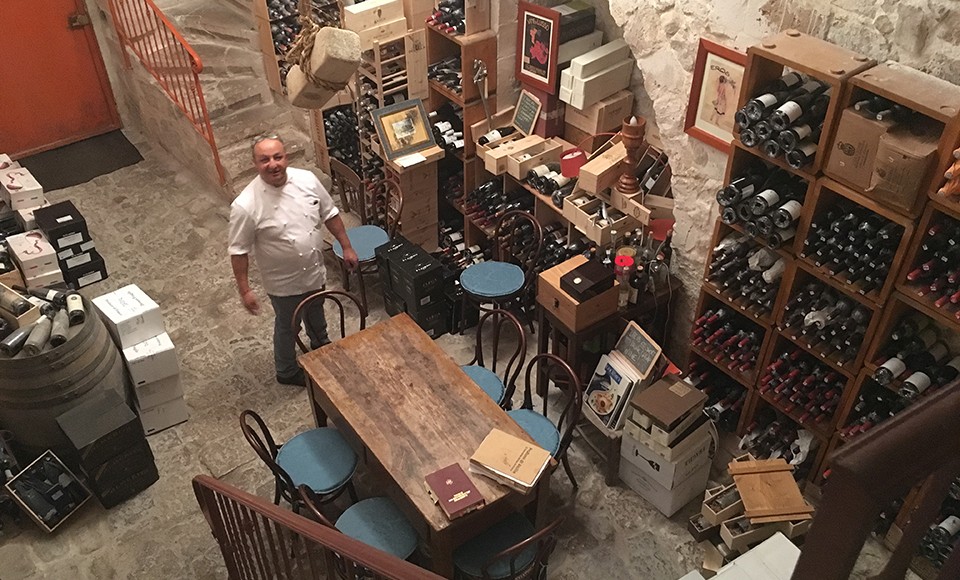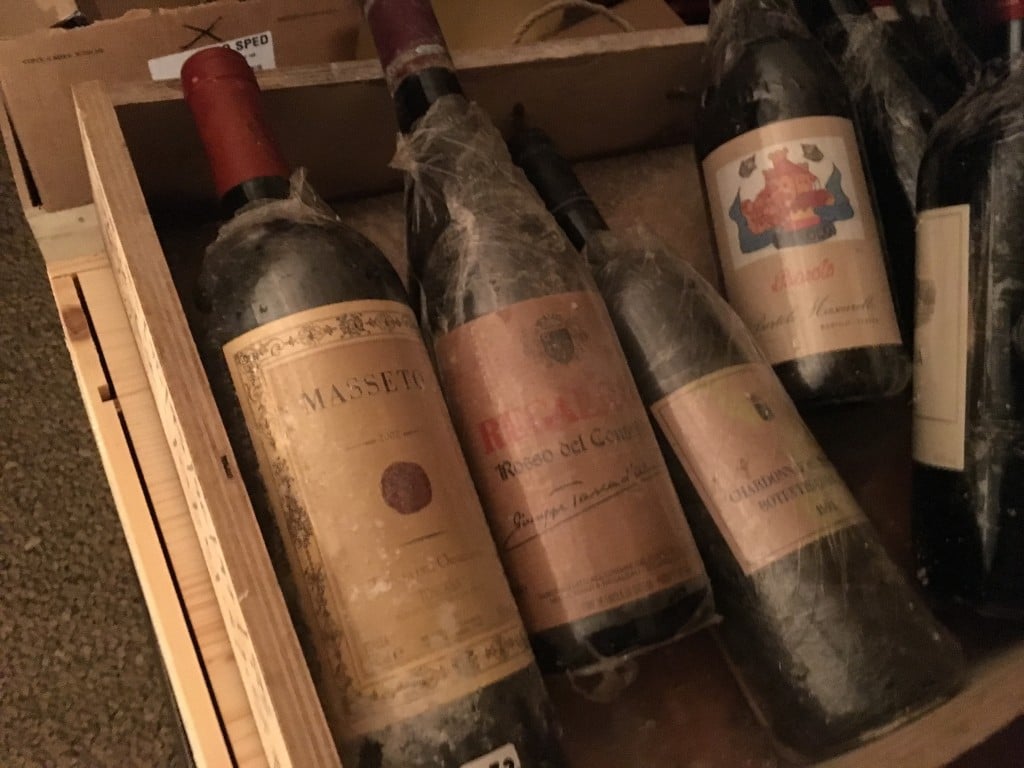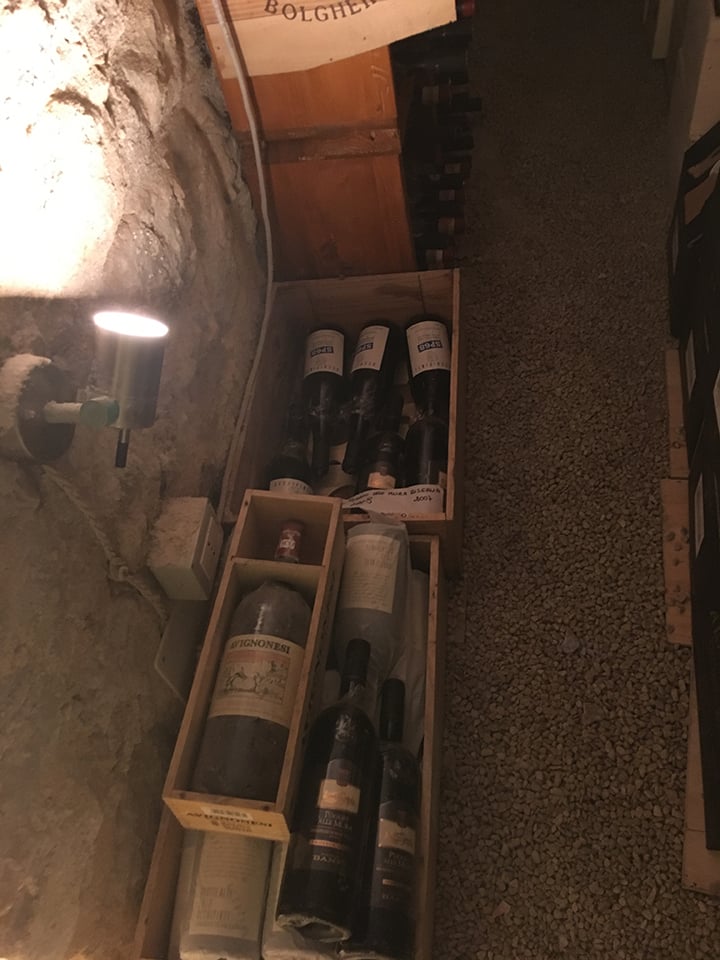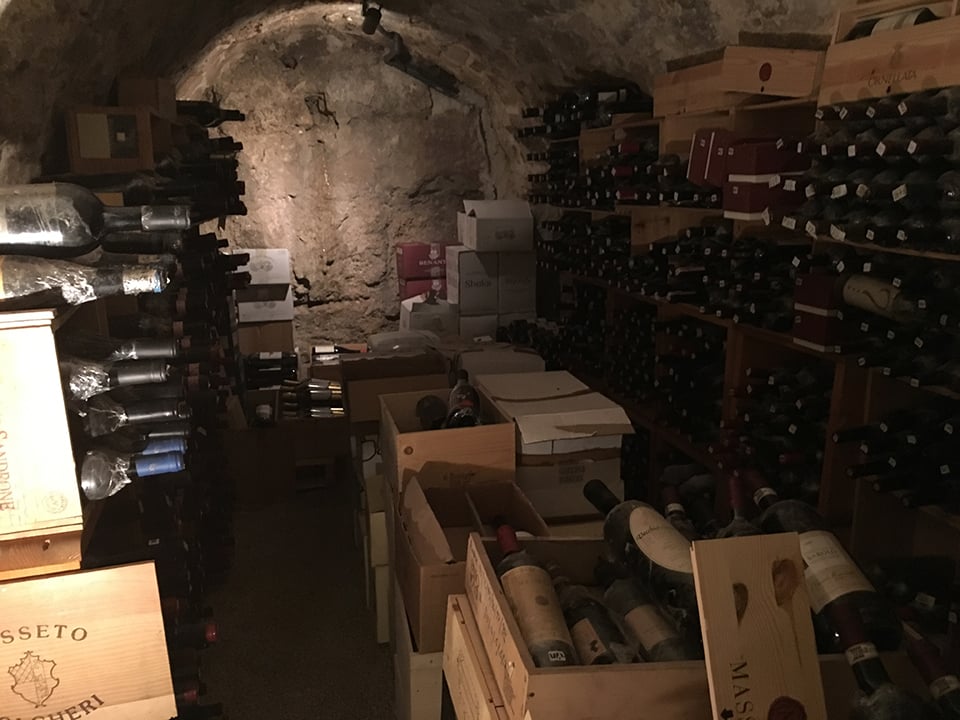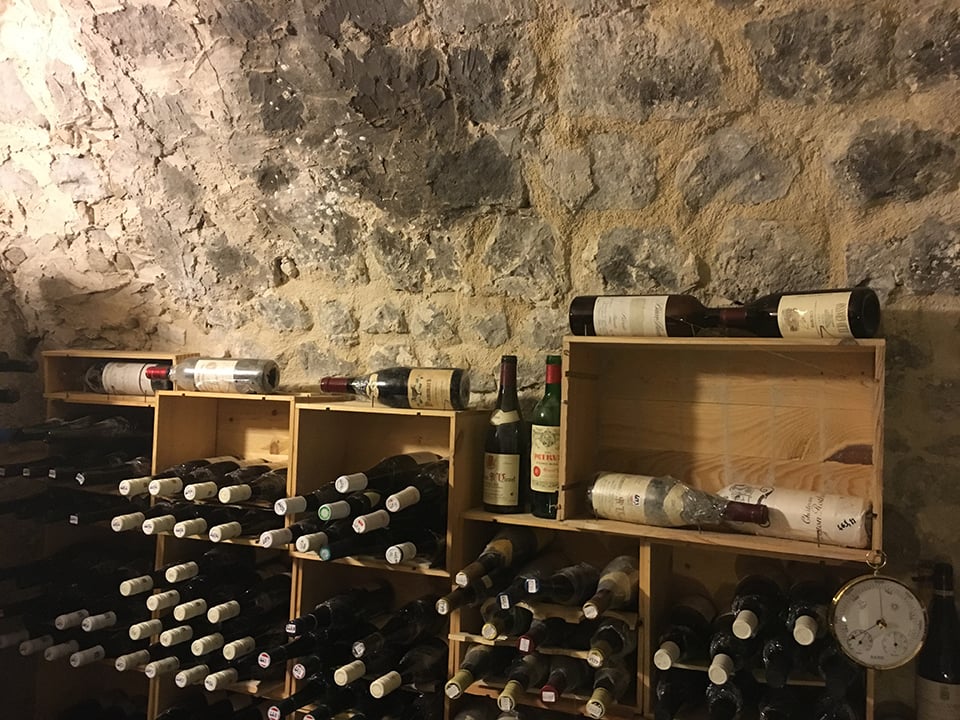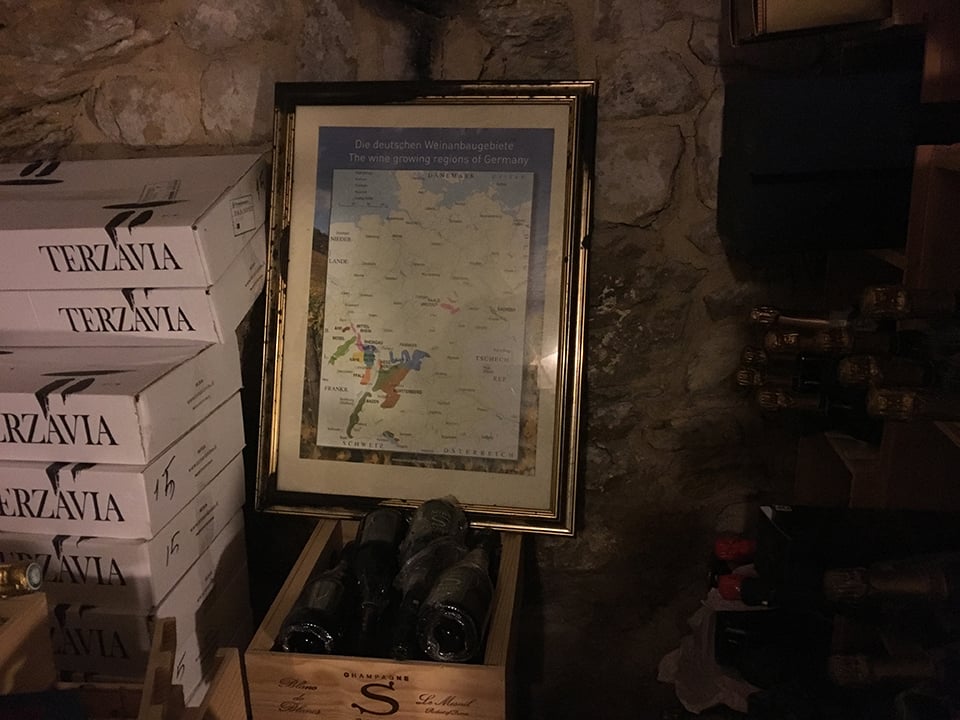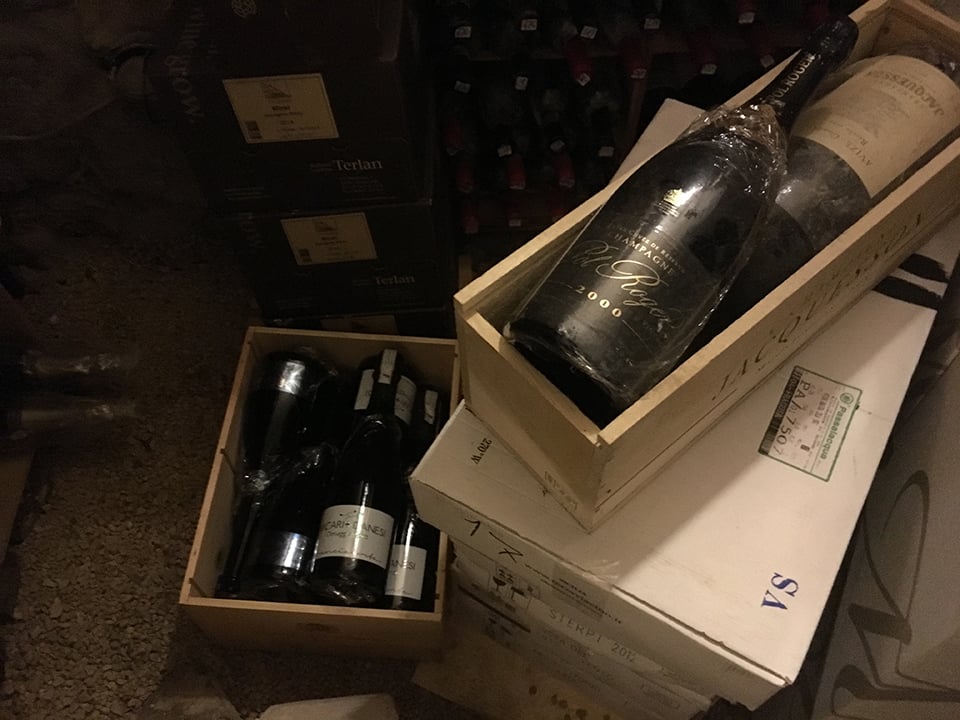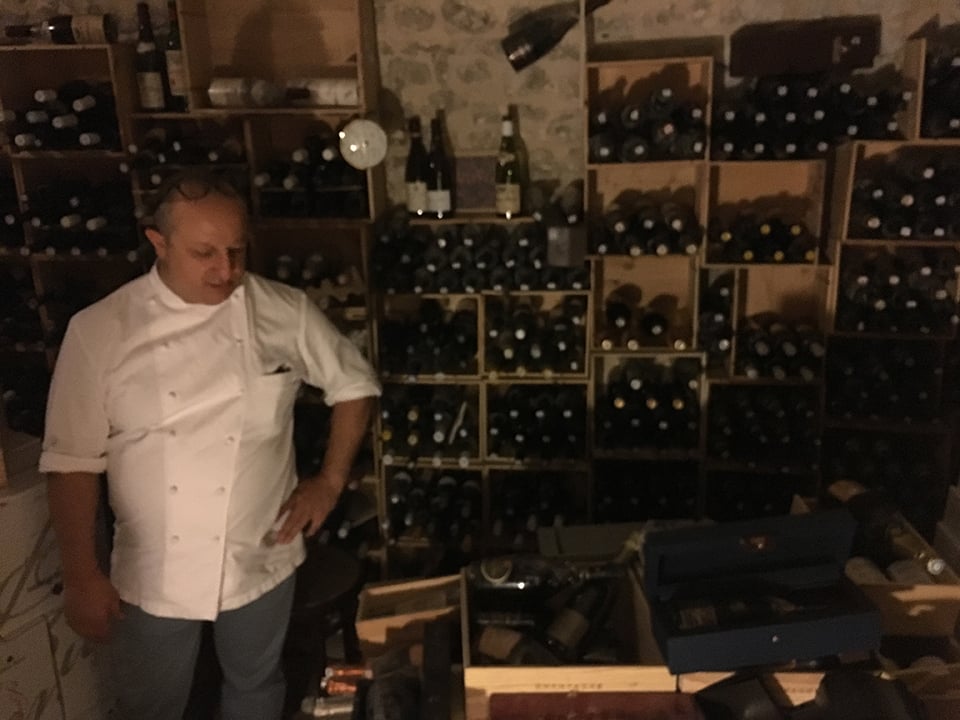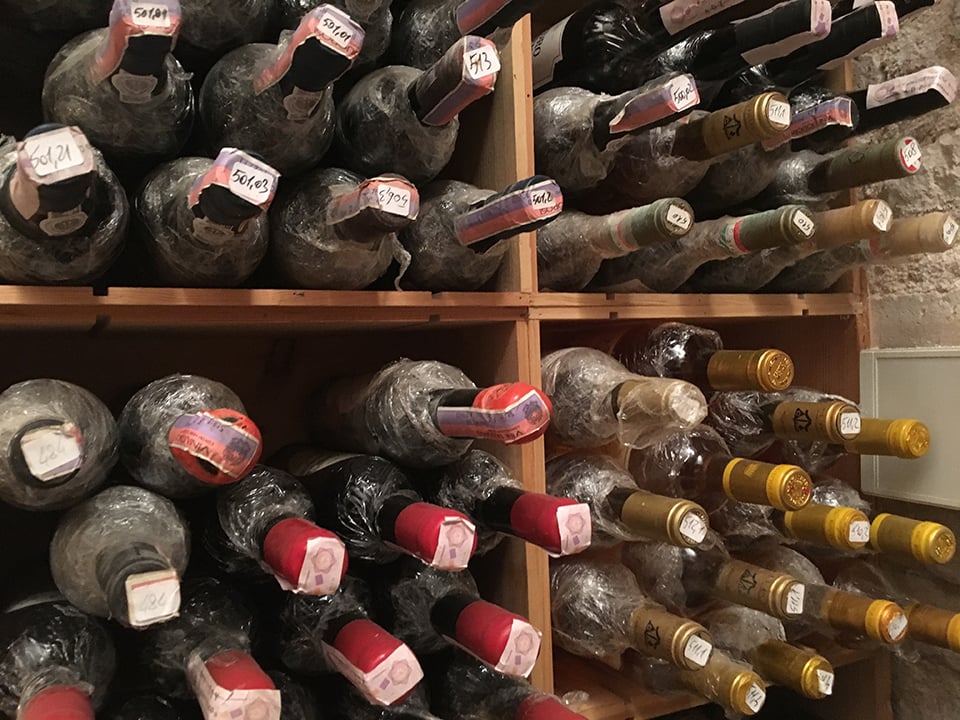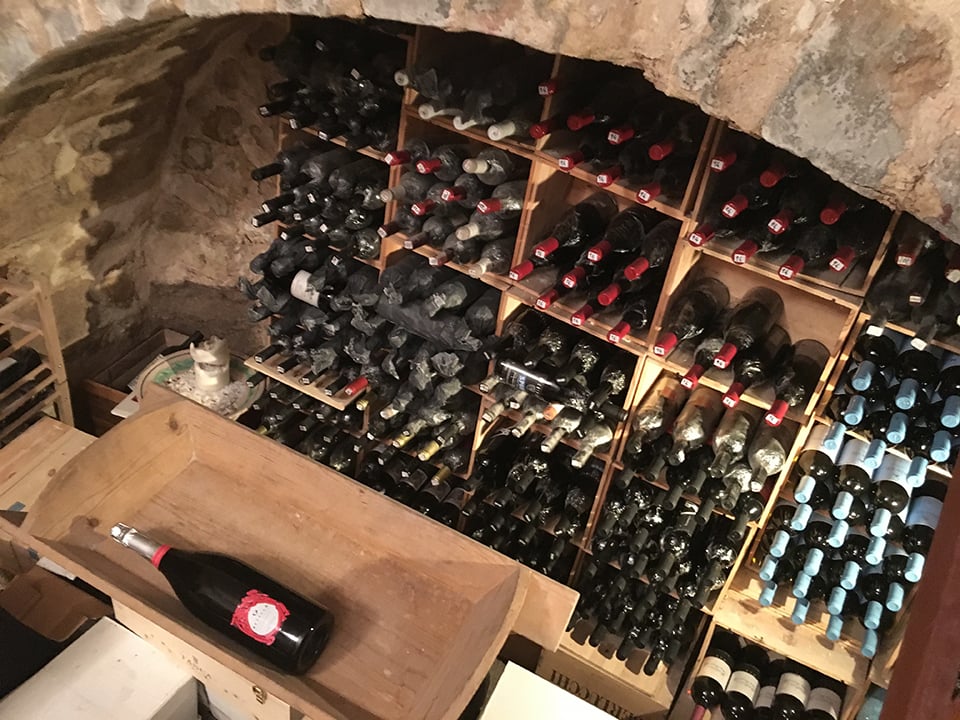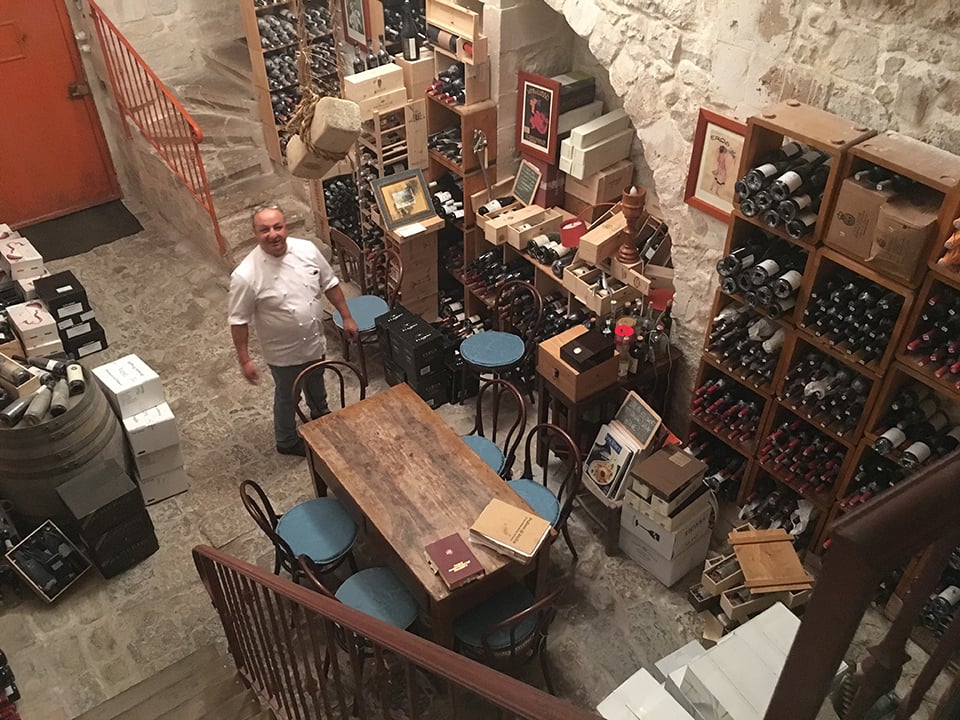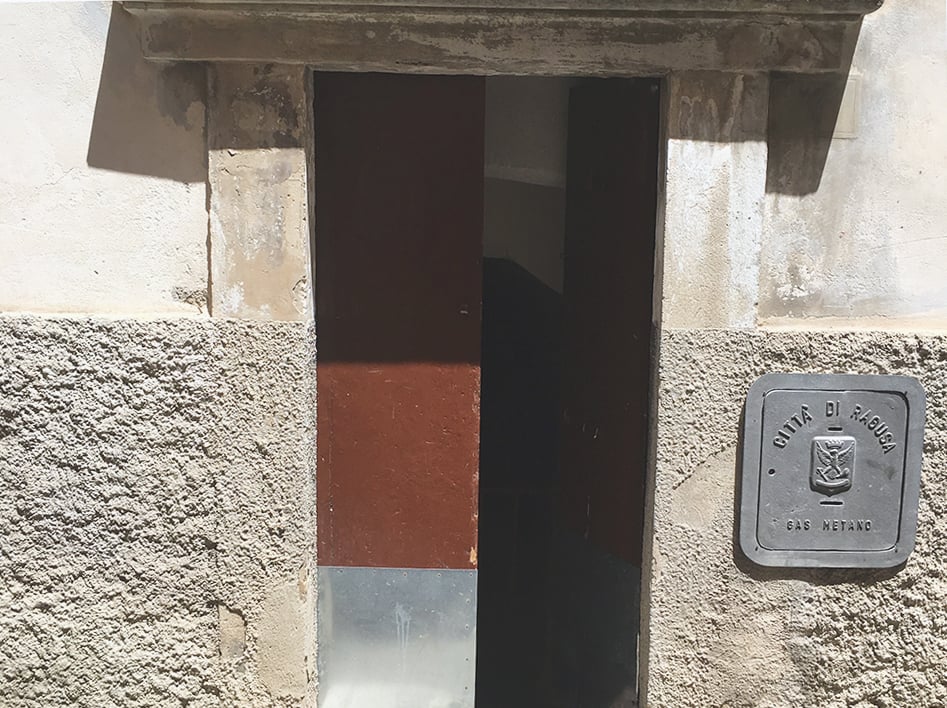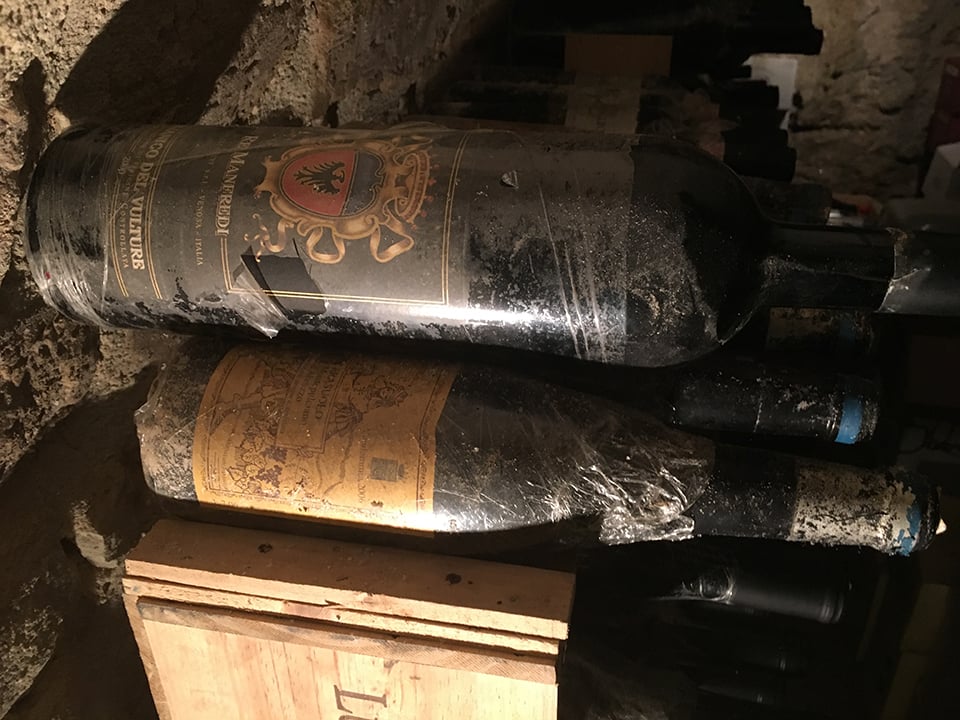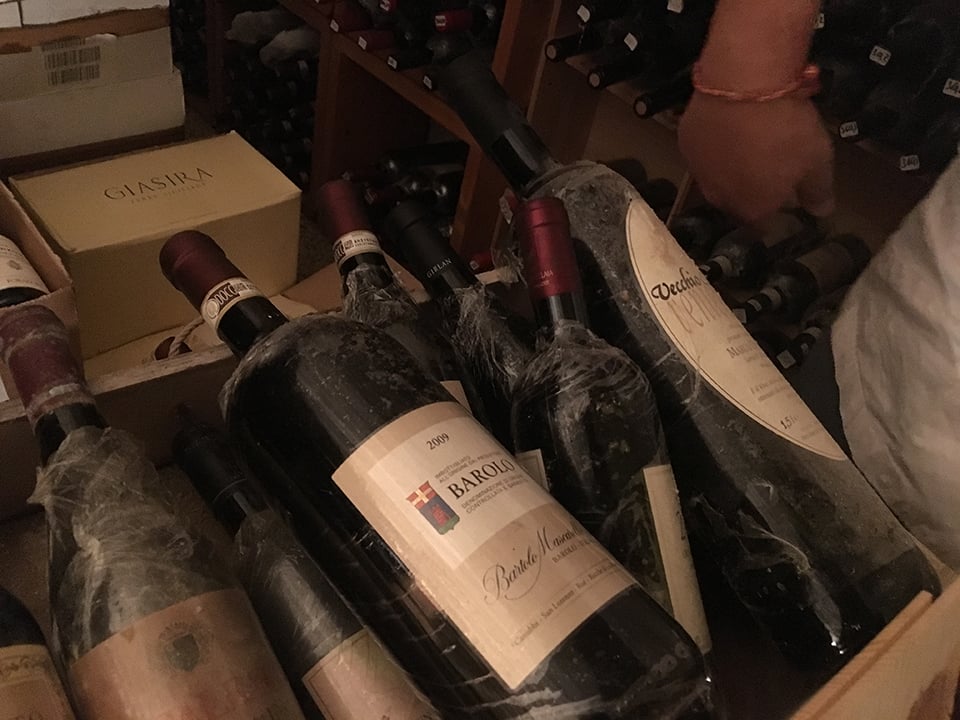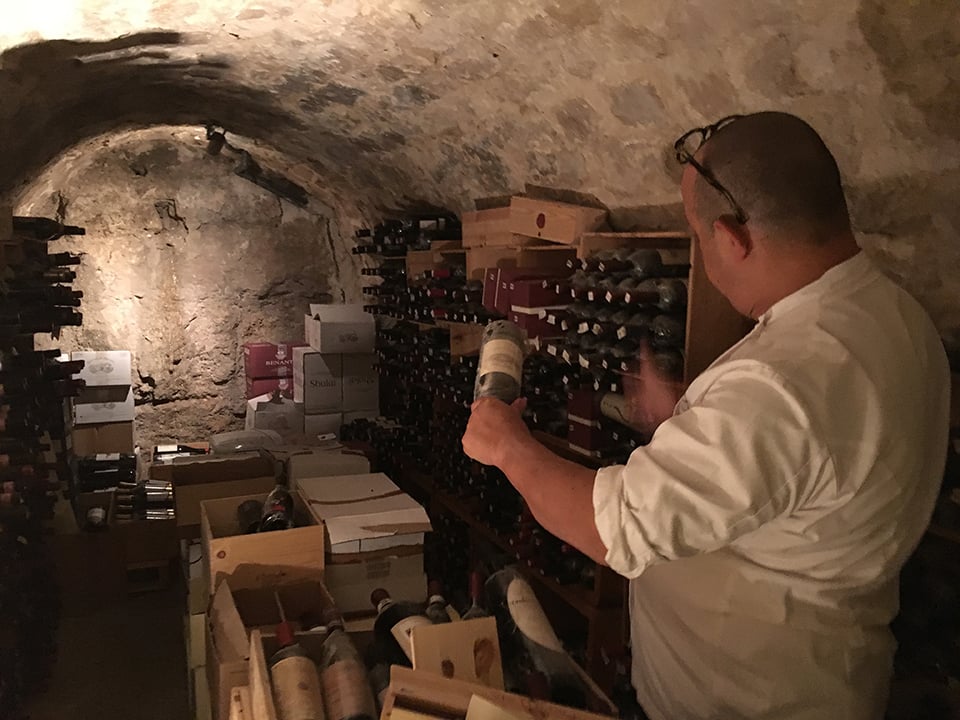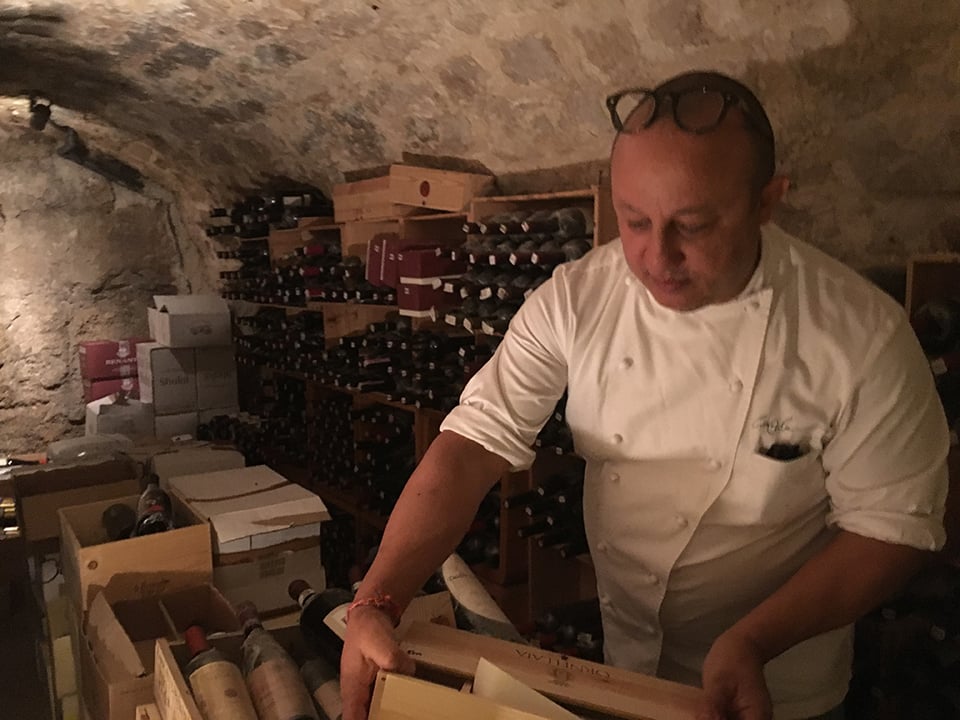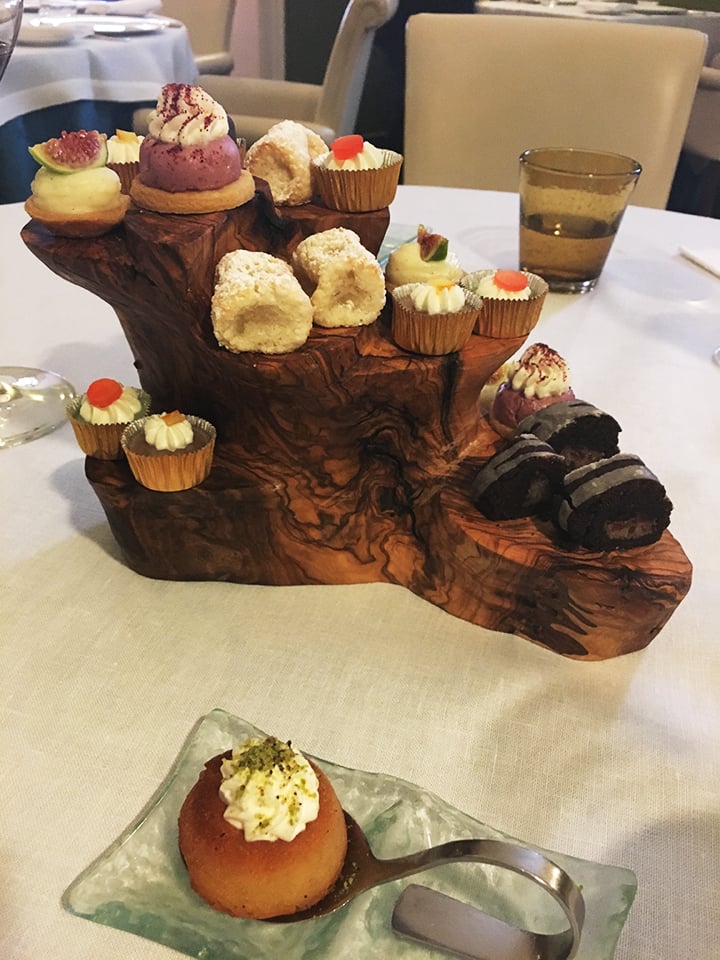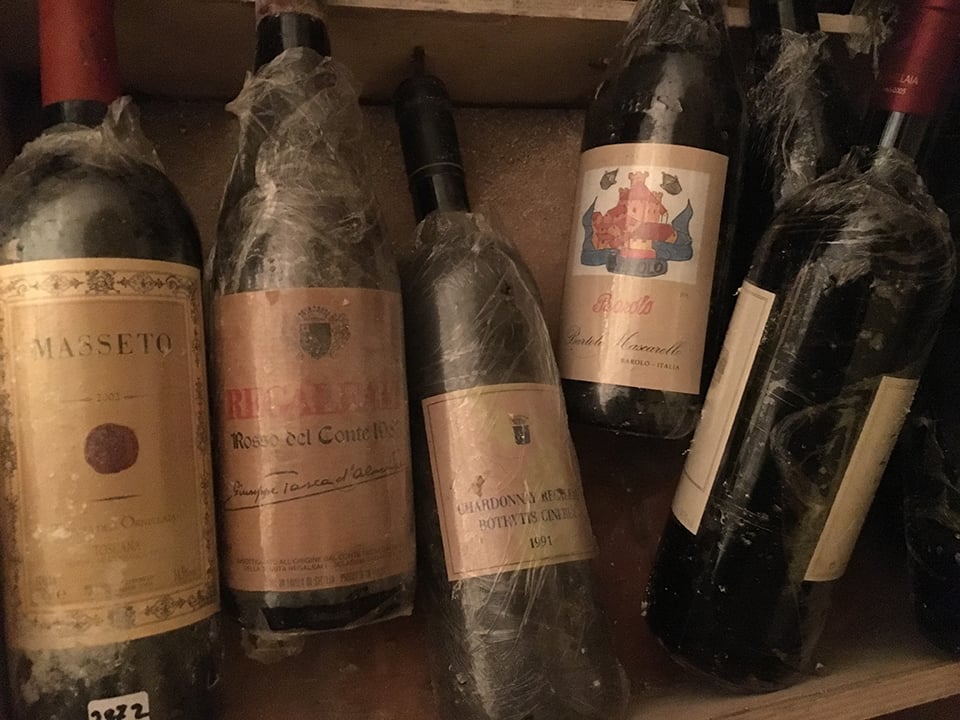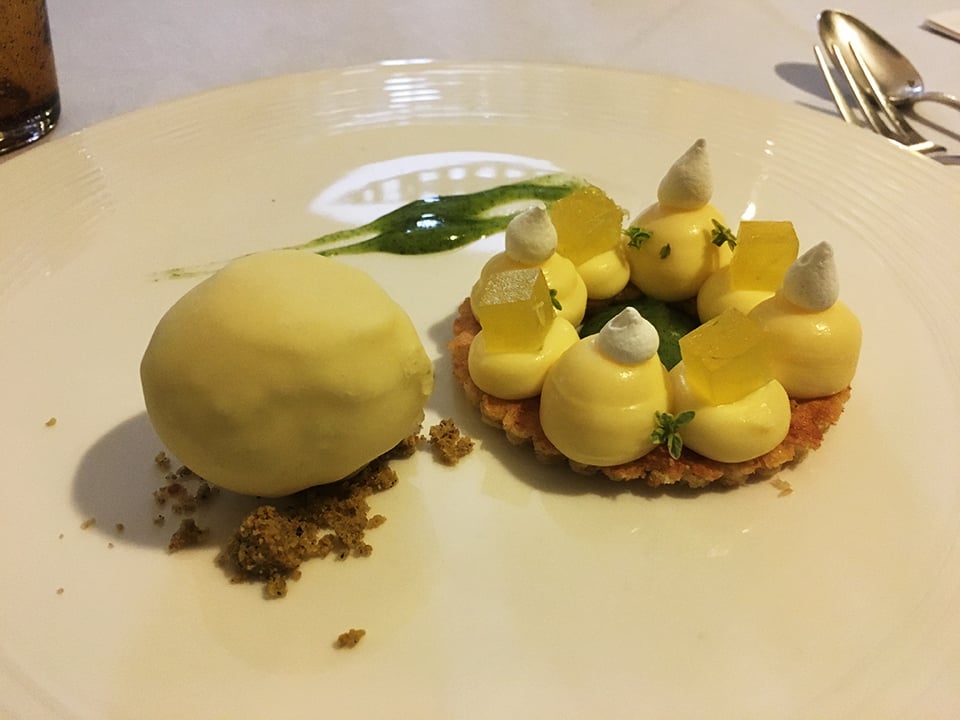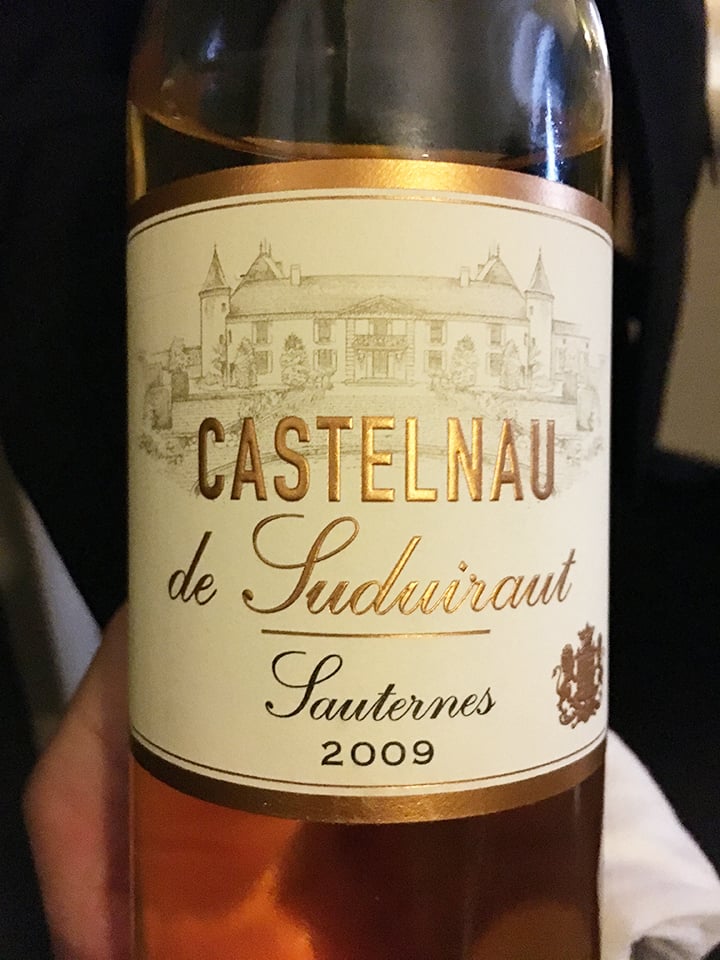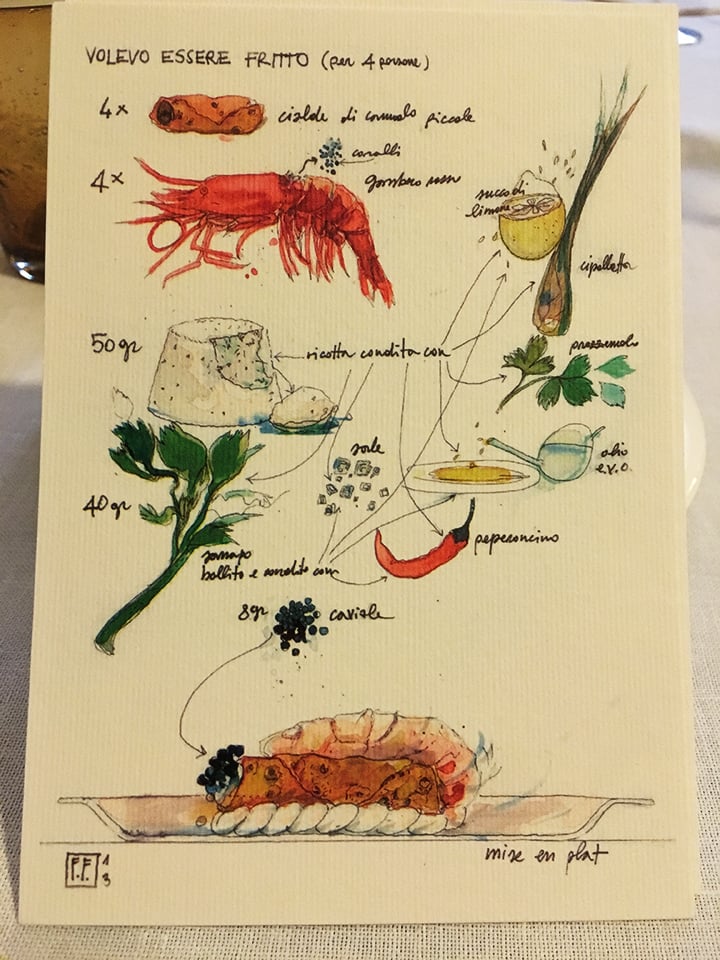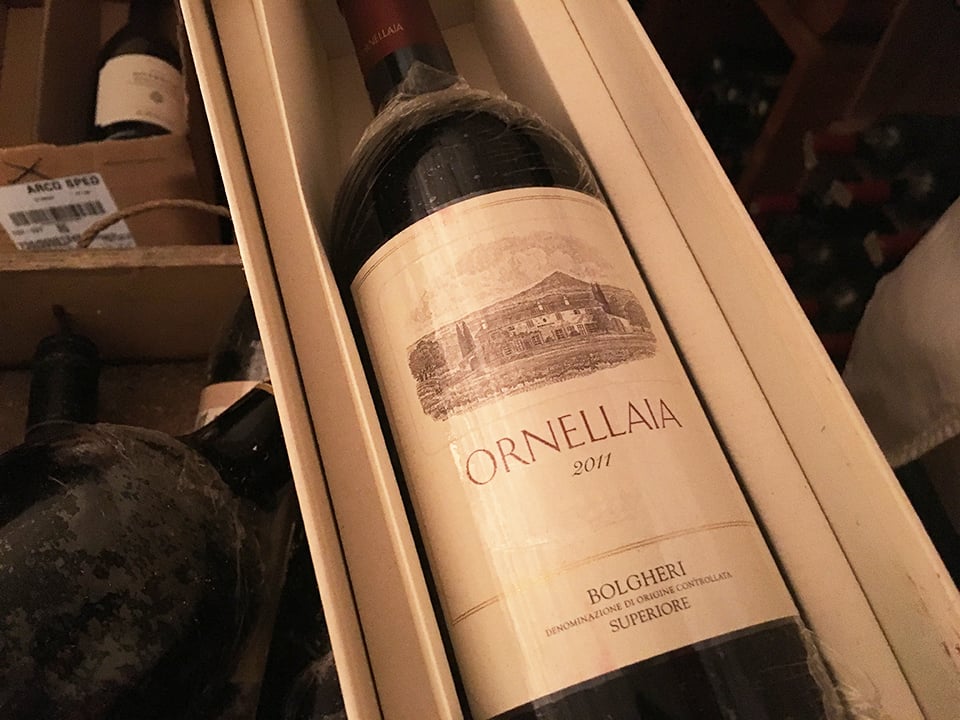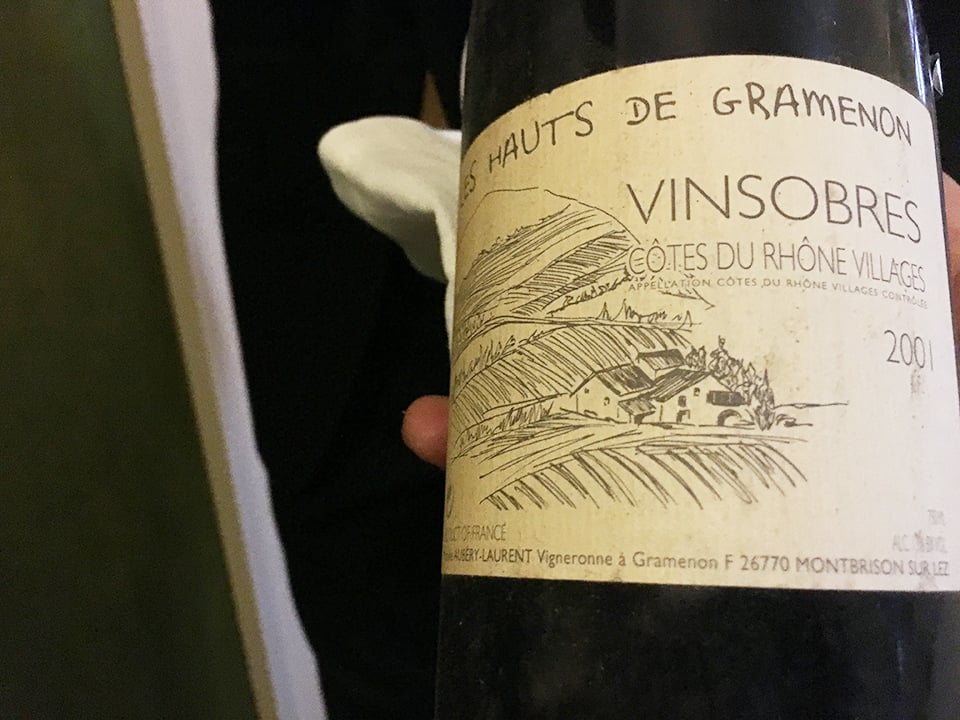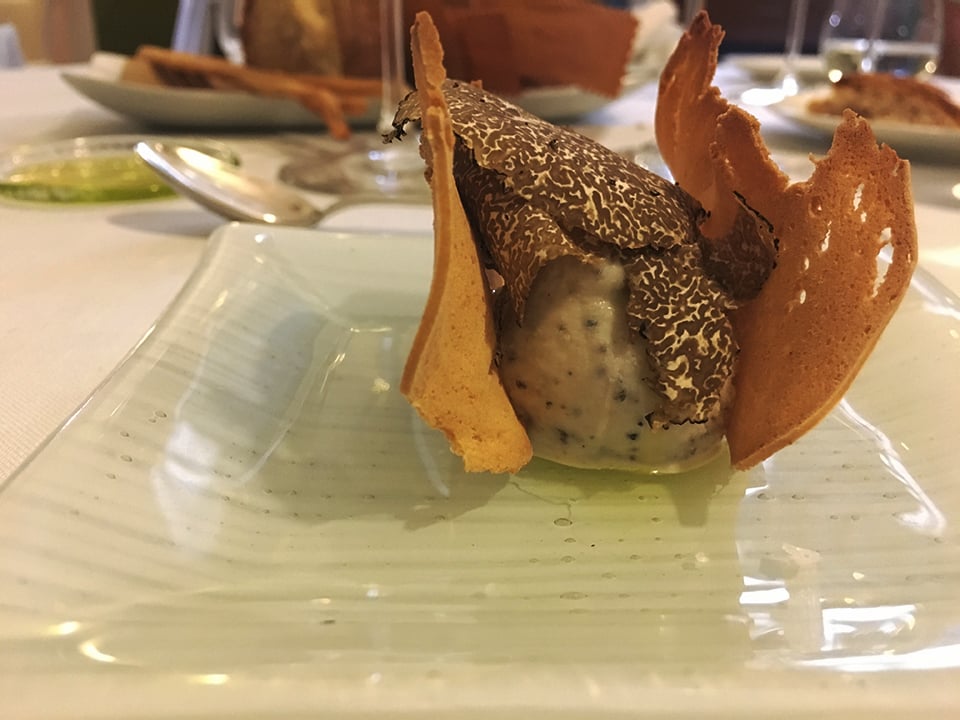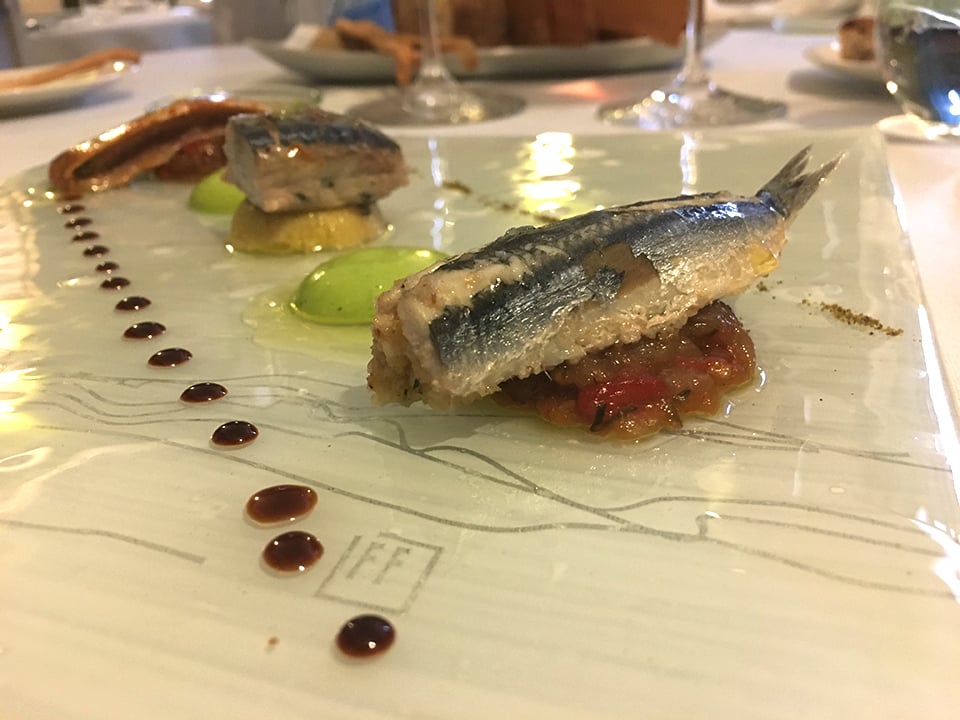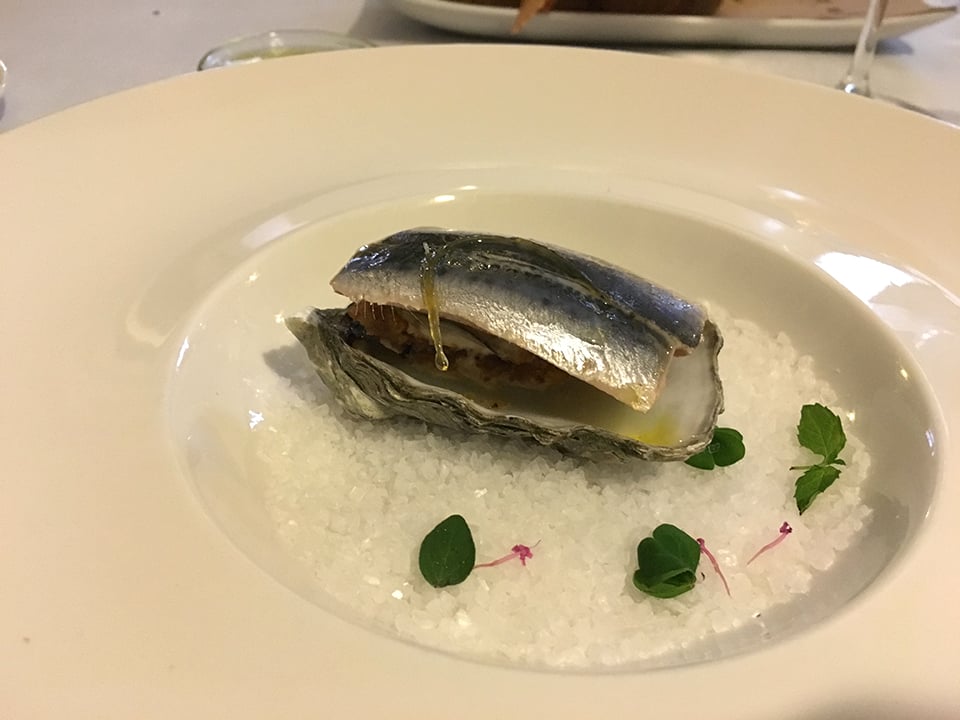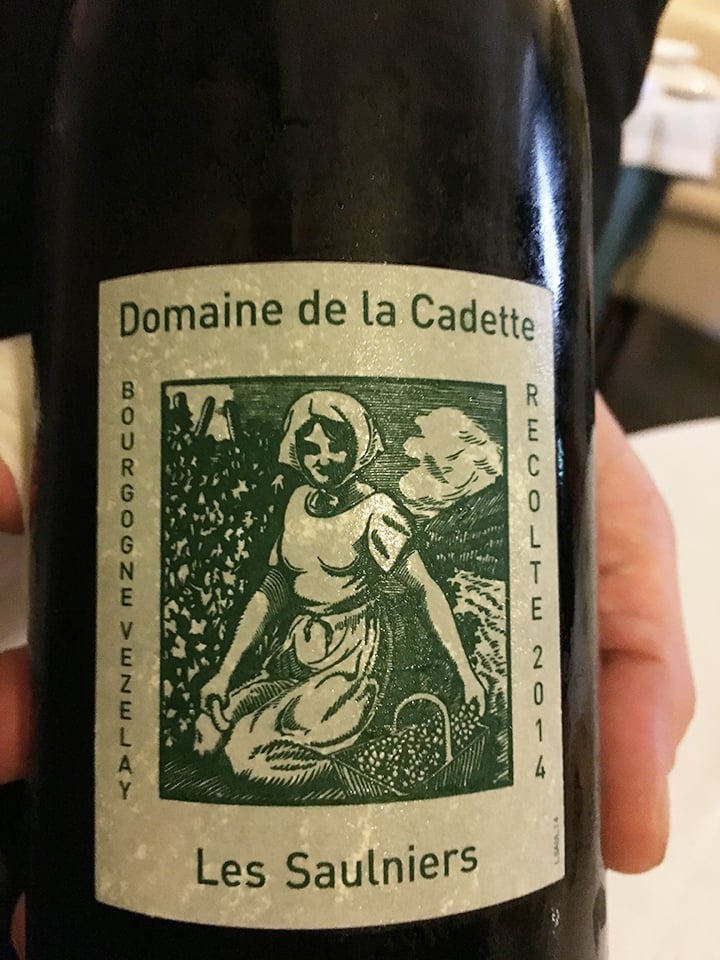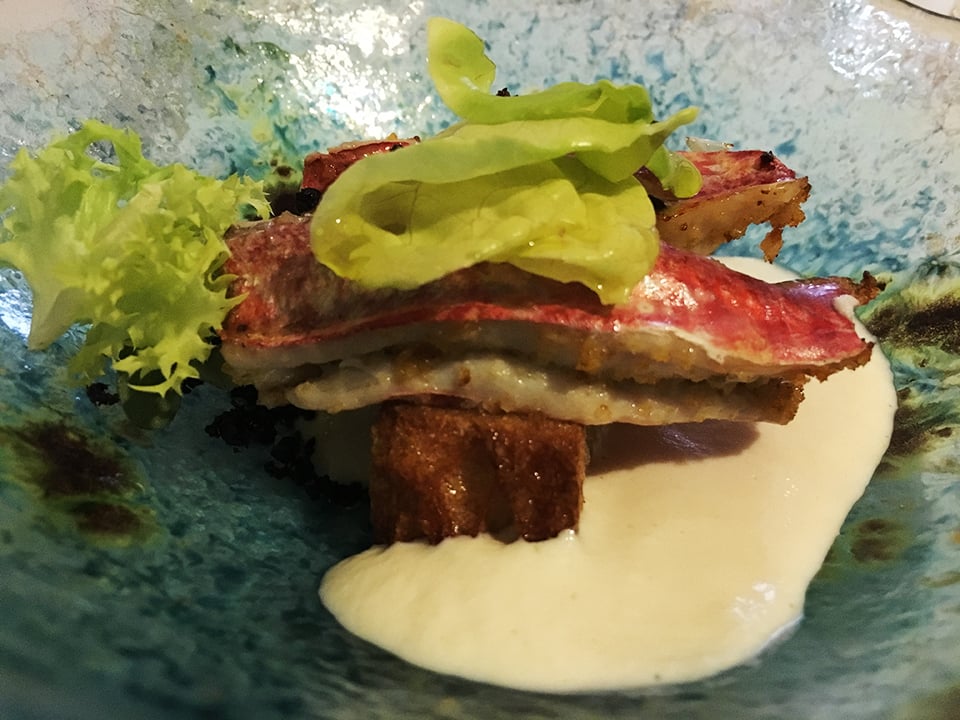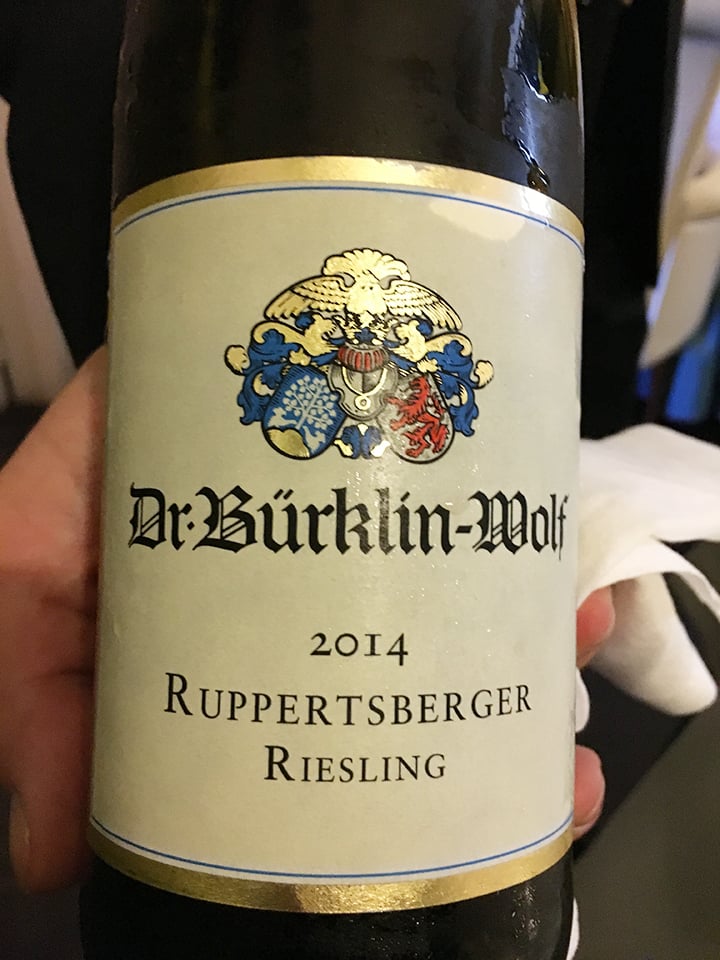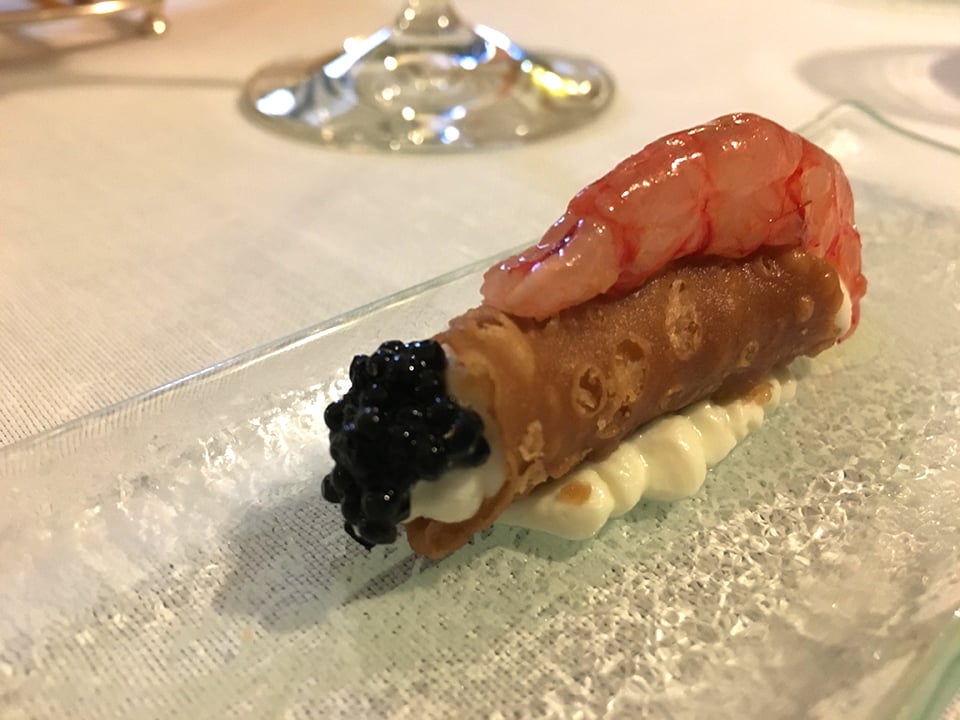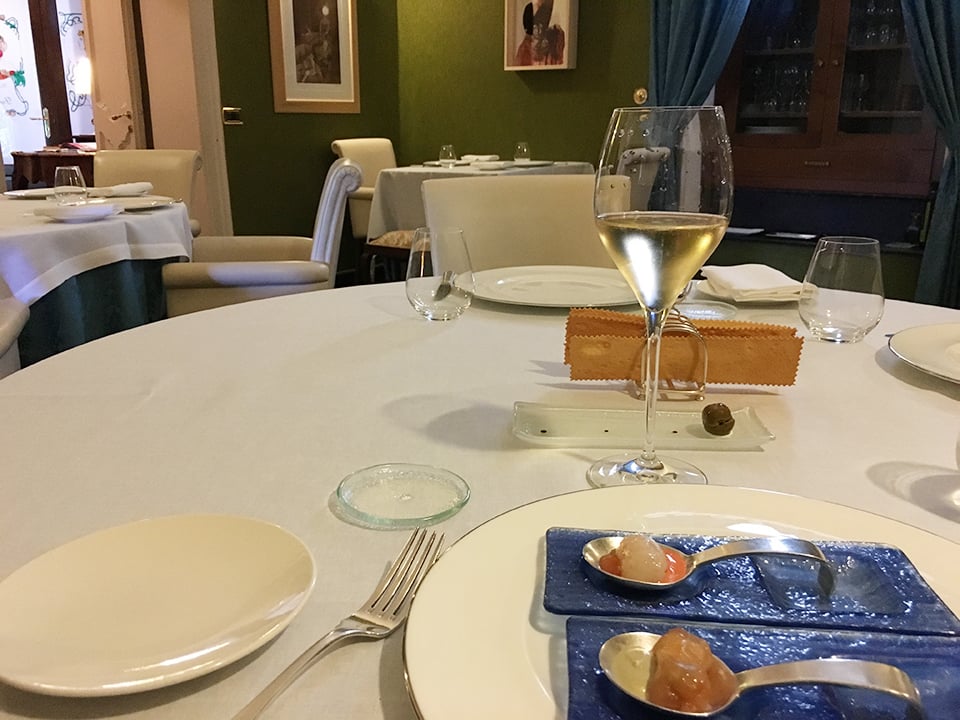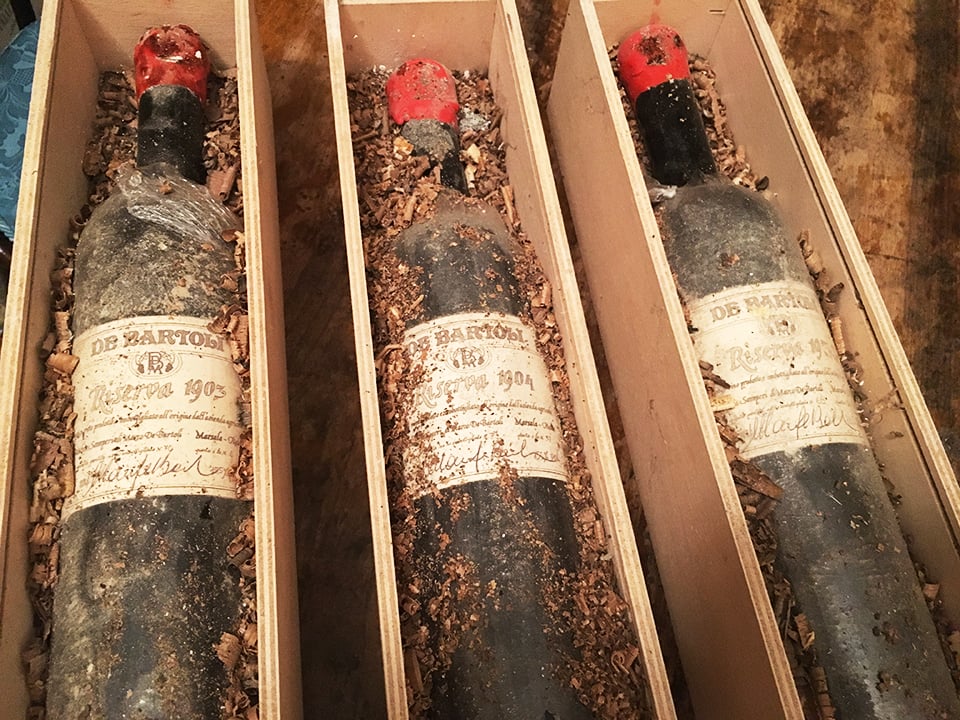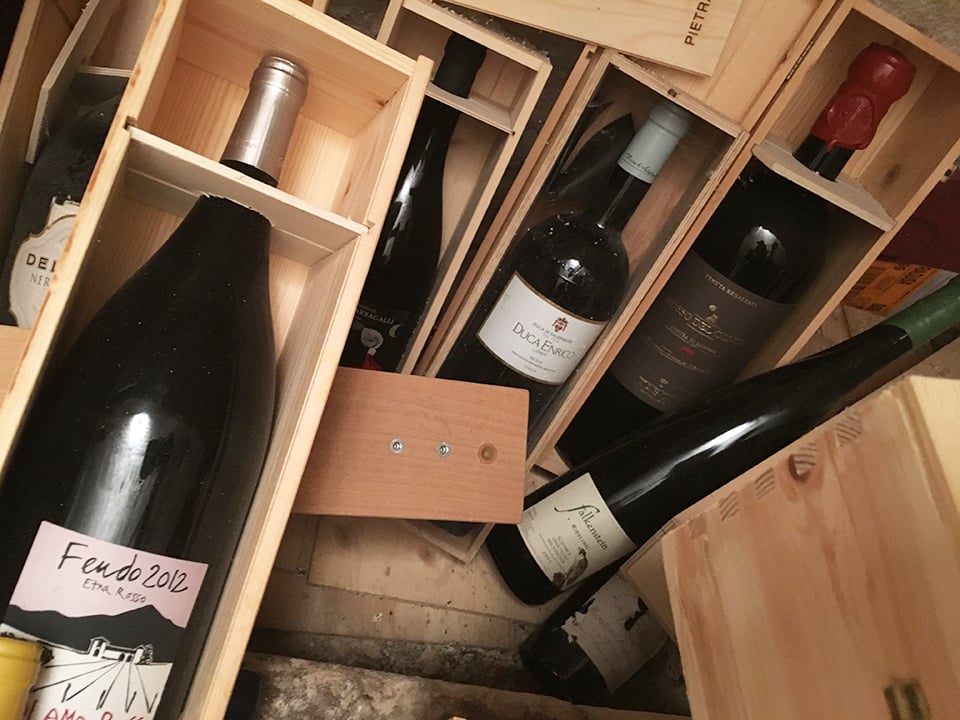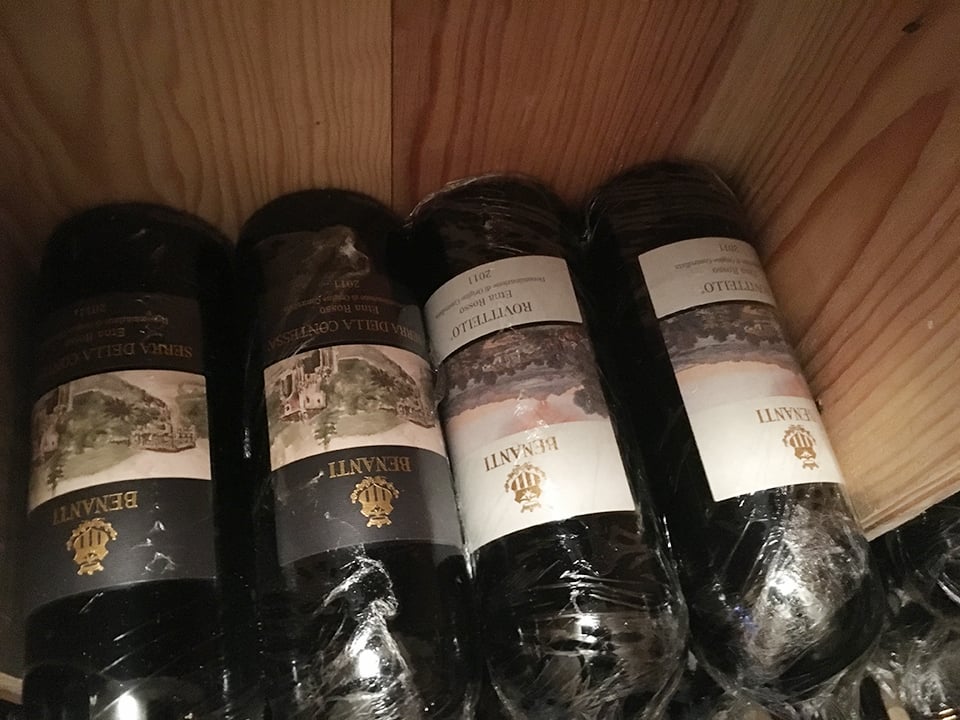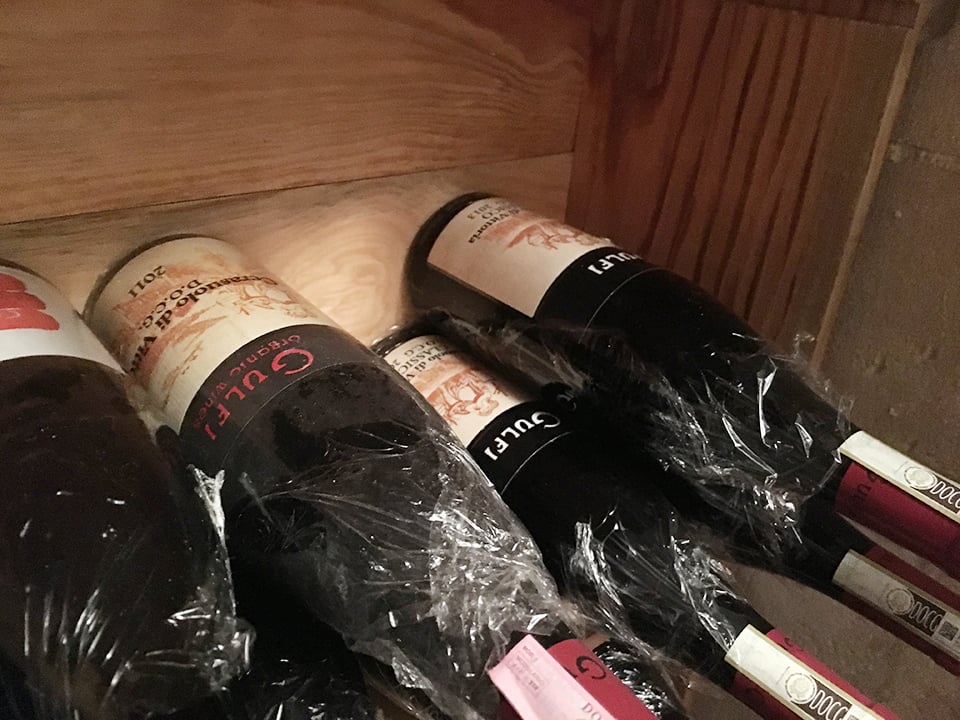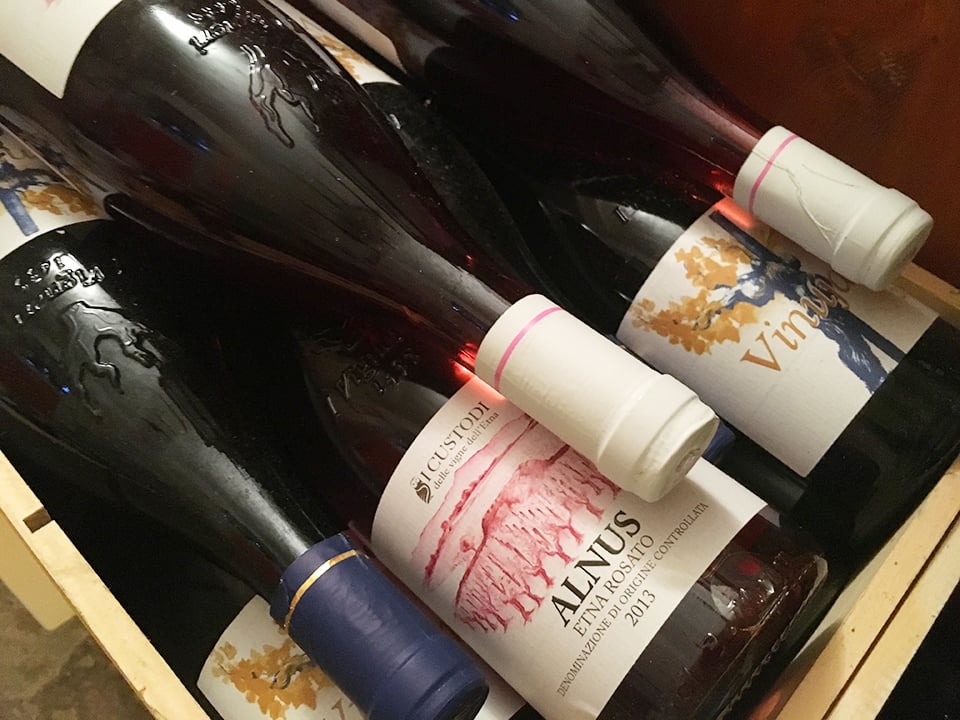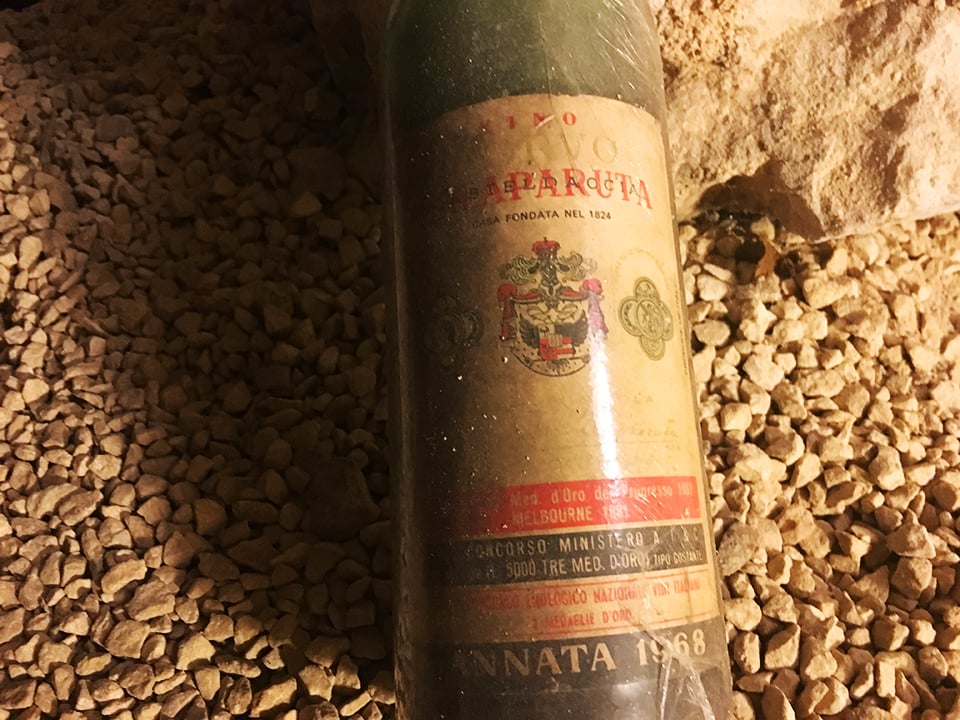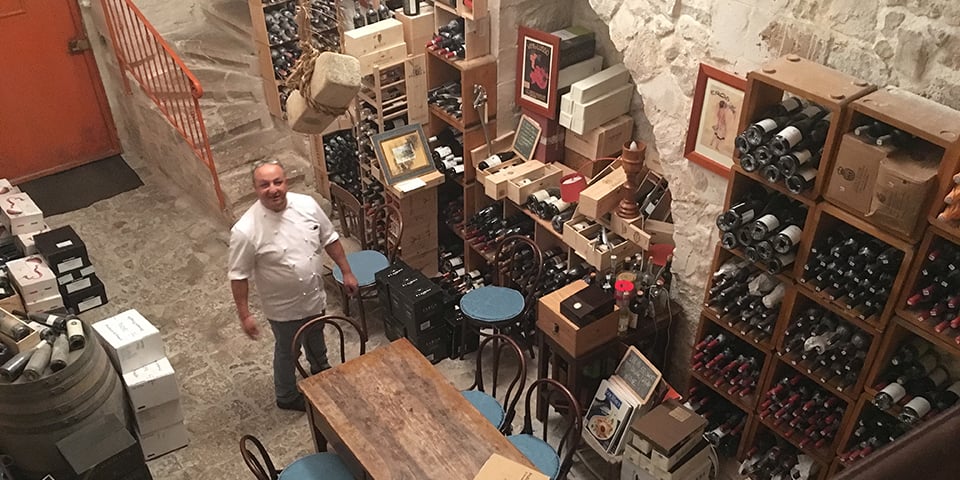(Photo: cellar / Ciccio Sultano)
A premise
For gourmets, the presence of wine at a restaurant is a necessity, an indispensable piece of the mosaic. You don’t have …? End of the story. No wine, no party. We won’t even take a seat, and – if forced to do so by circumstances – it will be war without quarter, we won’t return and we will talk about our disappointment with friends and colleagues. A strange grimace along a conspiratorial silence will be sufficient to discourage anyone.
Restaurateurs, at least those who know what they are doing, know this very well and work hard at this part of their profession, some with true passion. They move around, go visit producers, exchange opinions, cultivate friendships, lunch or din with others on Monday when their restaurants are closed. Bring bottles. Purchase the wines directly from the growers. Spend time, energy, and money.
The wine card
A restaurant with a star without a well thought out wine card does not exist. It is simply impossible. It is a mere fact and does not need any sort of contorted logic to explain it. Therefore, what does a client with a true passion for wine request from a restaurateur he respects? A lot. The bottles must be ample in number, diversified, representative territorially, high level, famous, lived through, well matched with the dishes, “entertaining”. This means that the wines are not there to refresh, to quench thirst, but rather to stimulate and provoke the customer. It must be “democratic”, even a beginner must find something at a reasonable price. And it must not be “stale”, i.e. to cit my friend Beppe, “don’t try to peddle me bottles you haven’t sold for three seasons, those of a so-called vintage which will not age well even if frozen or are decrepit or even defective by now”. And, finally, a note on “conservation” and “service”: where and how are the wines kept? In a storage room with the potatoes and still in the carton or, even worse, in a refrigerator in the entranceway together with the beer and soft drinks? Is there a space whose temperature is controlled and constant, away from the light, safe from contact with bad odors and detergents? The glasses? Are they suitable or is there one for all the different wines, the large one for the water and the small one for the wine? I need not respond.
The cellar and the “treasure hunt”
With this as a premise, it is my intention to recount my last experience at the Duomo Restaurant of Ciccio Sultano at Ragusa Ibla. A moment in which, every once in a while, you can do things in reverse, choose first the bottle of wine and then order the dishes you wish to eat. The rules advise you not to do it, it is the food which commands. Always. First the dish, then the wine which further brings out, to the maximum degree, its qualities and personality. In short, a dive into the cellar with Ciccio in search of treasures hidden away. Digging as deep as possible, something important will come forth. We descend through a small, innocent-seeming door. I need to bend, then descend steep and narrow stairs, and the coolness begins immediately to prickle. The eye slides towards a small table in the first space we encounter. Sassicaia 2009 along with the 2000 Cometa from Planeta. Almost all the bottles are wrapped in a cellophane film to protect the labels from being ruined by the humidity. The customer will find them, to his immense joy, in immaculate condition when the cork is popped. The shelves are tight against the stone walls. I become pensive with the sight of the Bulles of Thierry Germain and Michel Chevré, a Jeroboam of the 2000 Pol Roger, a 1990 Dom Ruinart Rosé. Two yards further on, a small picture with a map of Germany. On the other side, two wooden packing cases with the Richebourg and Corton of Romanée-Conti (a thousand and six hundred smackers, respectively). Sparkling wine: well present with Steinbruck and a 1996 Clos d’Ambonnay from Krug, with four thousand euro you can open the latter. Five red wines in the corner: Petrus and the 2001 Romanée St. Vivant 2001 of Hudelot-Noellat side by side. The 2001 Chateau Talbot 2001 at a truly honest price of 85 euro. Chateau Haut Brion, one of my passions, the 2001 vintage. Present as well the 2015 Cloudy Bay. The 2014 SP68 from Arianna Occipinti, a magnum of Fessina‘s 2009 A’Puddara and the 2013 Guardiola from Andrea Franchetti’s Passopisciaro estate. In an opposite corner I glimpse a Moselle from Ernst Loosen, the l’Erdener Treppchen Kabinett 2009, and I already start dreaming of that crisp freshness enveloped in a mist of soft, hypnotizing fragrance. The 2012 Riesling from Clemens helps me visualize the quietly-flowing waters, the rocks, and Pünderich’s Marienburg vineyard. There is the Knoll’s generous 2007 Loibner Riesling Smaragd, those who have seen the Danube and the Wachau will get it on the fly. The eye moves on to a Meursault, Coche-Dury’s 2010 1er Cru Genevrières.
I return to home base with a vertical series of Masseto. Beneath it a magnum from Avignonesi. Just above, the Trebbiano of Edoardo Valentino. On a ledge there are the wines of Tasca d’Almerita. The Rosso del Conte 1988 and the 1991 Chardonnay Botritis Cinerea are supported by a Barolo from Bartolo Mascarello, I do not touch them for fear of ruining the balance of the bottles. Elizabetta Forardori’s 2013 Sgarzon Teroldego is just a step beyond with wooden cases on the gravel floor. The 2011 Ornellaia. Vertical sequences of Tignanello, then the Gschleier di Girlan, the 2013 Alnus of the Custodi dell’Etna, and the Vinujancu dei Vigneri di Salvo Foti. An insane vertical series from Marco de Bartoli: Riserva 1903, 1904, 1938. Priceless. In a nearby angle a vertical series of Gulfi’s Cerasuolo di Vitoria and the 2002 Tané from Valle dell’Acate. Then Benati with one of my favorites, the 2011 Rovitello and, once again a 2011, Serra della Contessa. The magnum corner: Girolamo Russo’s 2012 Feudo, the 2008 Rosso del Conte, and the 2011 Riesling of Falkenstein in the Alto Adige. Vigna Barbagalli, Duca Enrico, and Feudo Principi di Butera’s Deliella are at their side. And to finish, something luminous is needed, something like the 1988 Château D’Yquem, the 1998 Vintage Port from Graham, or Carlo Hauner’s 2008 Passito di Malvasia delle Lipari.
The Menu
I return to the table. The setting, chosen in advantage, has been prepared by Gabriella Cicero and sommelier Paolo Belluardo. For a sense of fairness, we have decided to exclude Sicilian wines: it would be the best choice in terms of matching with the food and logical as well, but every once in a while it is enjoyable to play on someone else’s turf. Sicily is in the dishes and there are no precise rules to be observed. The cuisine of Ciccio Sultano is authentically “fusion”, as is the island itself and its history.
The aperitif is a complex question, the cocktail menu features classics but offers as well mixology creations. I pass and start right off the bat with Steinbrück’s non-vintage Blanc de Noirs. In the meantime a smoked swordfish with a salad of sweet melon from Paceco and pistachios has arrived along with an olive filled with a “fake” stuffing, a Mediterranean shrimp with it coral and a prickly sauce , and then a … “volevo essere fritto”, a dish called “I wanted to be fried”, cannoli with a Mazara del Vallo shrimp and Oscetra caviar. These small ameuse-gueles continue and I play it by ear: Mareterra”, or sea and soil, is a moving dish of cottage cheese, raw sea urchins, mustard juice, shrimp in a light batter and waffles with squid ink accompanied by belly-cut grouper, watermelon, coffee, and Martini Extra Dry vermouth.
A brief pause and the scenario changes: the 2014 Riesling from Bürklin-Wolf is the perfect counterpart to a red snapper fished on rocks near the shore and stuffed with myrtle-flavored sour oranges and served in a almond soup; warm seafood salad, tenerumi (a green from he zucchini plant), oranges, and buffalo mozzarella.
One more pause and I change the wine: the 2014 Bourgogne Vezelay “Les Saulniers” from Domaine de la Cadette to go with “beccafico” oysters and a liquid “salad”, a centrifuged vegetal juice seasoned with lemon juice; as a first course, large tubular pasta from Gragnano (“fuori Norma”, outside the rules, or norms, with a wink at the opera of Vincenzo Bellini, composer from Catania), a monumental plate terms of its visual impact and complexity. And a playful dish to follow: the “Azzurro di Mare Omega 3”, inviting slices bluefish high in Omega 3.
A pause with an intermezzo: the ice cream of spring truffles fromPalazzolo Acreide and I change wine with a 2001 Côte du Rhône Villages, Vinsobres “Les Hautes de Gramenon” from the Domaine De Gramenon. A dish of lamb “in an arab crust” with beans from Cosaruciaro and a Colombia “Moak” coffee.
I change wines, moving towards dessert choices: the 2009 Sauternes “Castelnau” from the Domaine de Suduiraut accompanies “Sichilia”, a delicious lemon dessert, very territorial. What follows, the so-called Petits Fours merit, on their own, a trip to the restaurant.
The service, under the attentive care of maître d’hotel Gabriella Cicero is striking for the calm and elegant way it is carried out. It was chosen as Italy’s finest table service by the Gambero Rosso guide in 2015. To Cicero Sultano, at the end of the game, I can only offer my highest compliments, not merely for the delicious experience but also for his selections and his commitment to the wine cellar. All the rules have been respected. My sincerest compliments. For me it has been a privilege.
Read the integral version of the wine card, you can find it here on the site in pdf format:
(to note: there are many tasting menus available: the kaleidoscopic “Movimento” menu costs €190, wines included; the four course lunch menu costs €45. The tasting menus are served to the entire table of guests).
- Vini di lusso…
- Germania
- Ciccio Sultano nella sua cantina sotto il ristorante
- Ciccio Sultano nella sua cantina sotto il ristorante
- L’antro. Da qui si scende per la cantina
- Ciccio Sultano nella sua cantina sotto il ristorante
- Ciccio Sultano nella sua cantina sotto il ristorante
- Teoria su cartolina de “volevo essere fritto…”
- “volevo essere fritto…”
- Corvo Rosso 1968. Stria del vino di Sicilia




